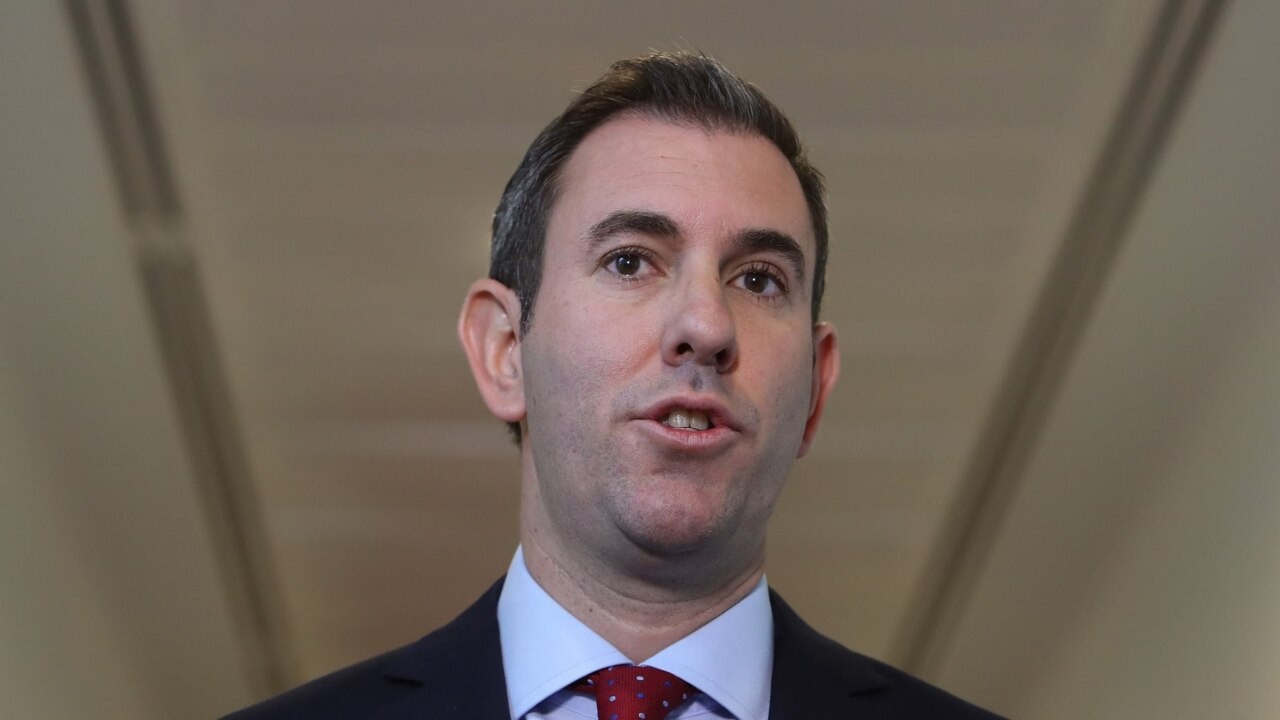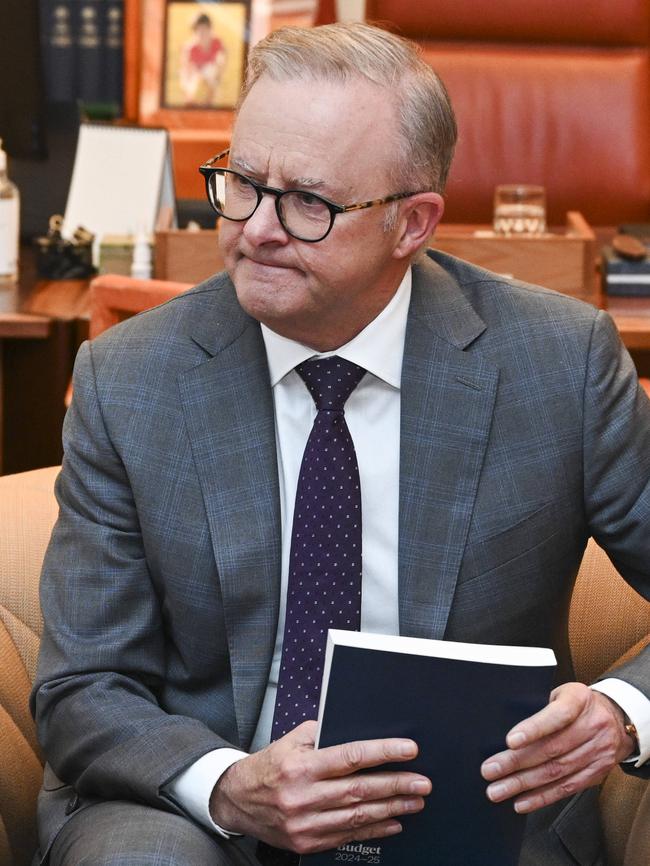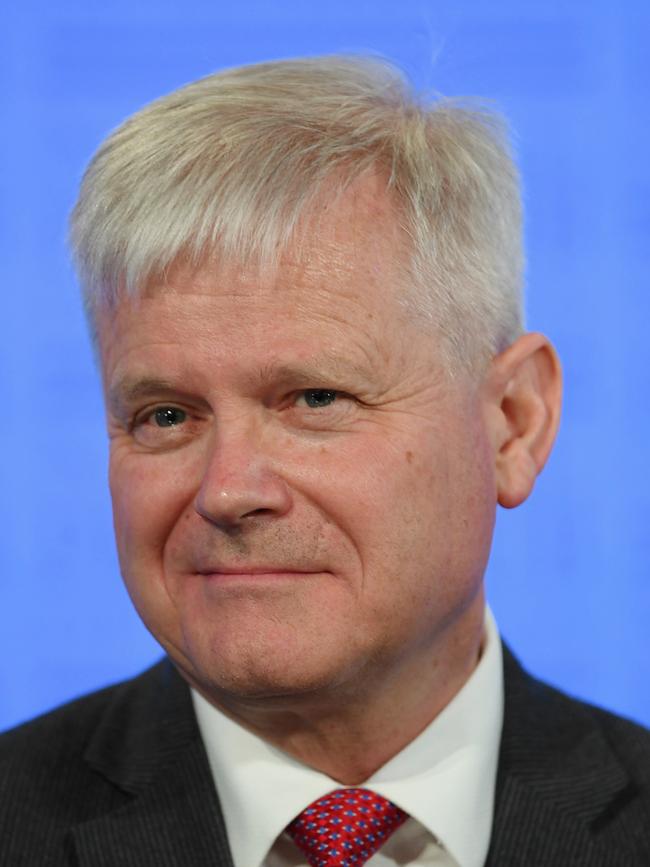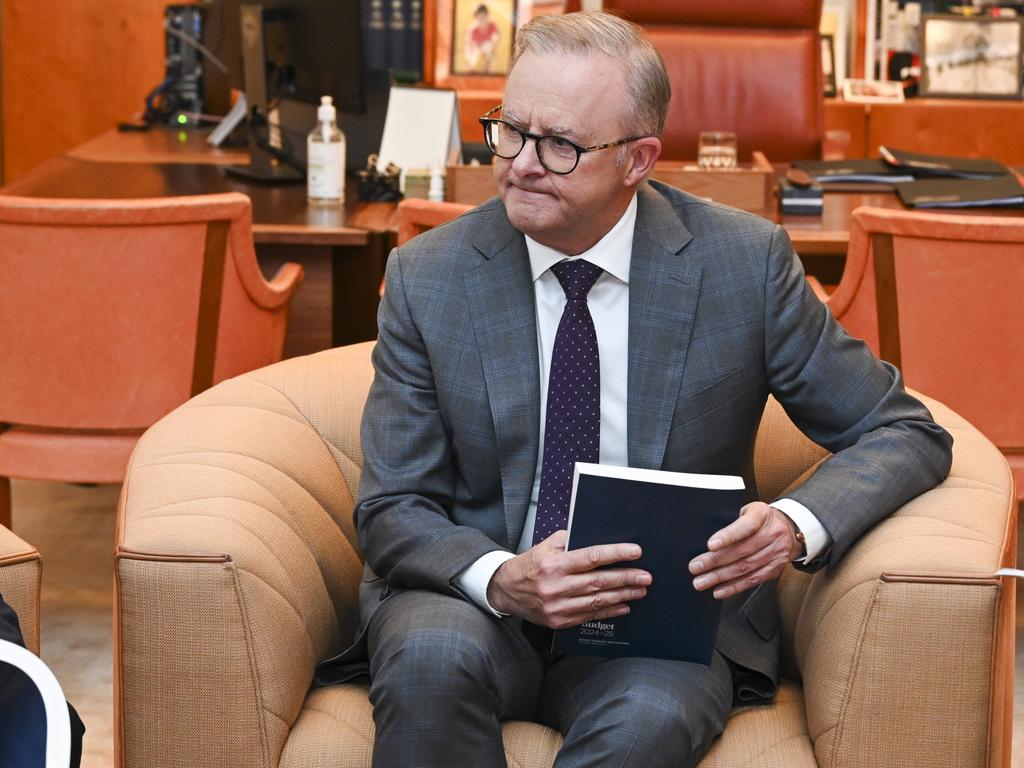Budget 2024: True Labor’s avoidable spend in $9.3bn surplus
Jim Chalmers will abandon future surpluses in favour of ‘unavoidable’ spending worth tens of billions, wage rises for low-paid workers and cost-of-living relief, as his third budget banks a $9.3bn surplus.

Jim Chalmers will abandon future surpluses in favour of “unavoidable” spending on deals with the states worth tens of billions of dollars, wage rises for low-paid workers and cost-of-living relief, as his third budget banks a $9.3bn surplus followed by deeper deficits over four years.
As Treasury forecasts in Tuesday’s budget reveal a weakening economy, higher unemployment and slowing growth, Dr Chalmers is under pressure to rein in long-term structural spending, implement tougher fiscal repair measures and speed up tax reforms.
A year out from the 2025 election, the budget will bake in massive spending packages funding generous short-to-medium term agreements with states and territories on housing, health, GST top-up payments, schools, the NDIS and skills.
Speaking to Labor MPs in Canberra on Monday, Anthony Albanese also flagged major Universities Accord announcements in the Treasurer’s “true Labor budget”.

On the eve of the budget, Dr Chalmers revealed Treasury was forecasting a surplus of $9.3bn in 2023-24. The surplus has been driven by surging tax receipts fuelled by the strong post-pandemic labour market and booming mining exports including iron ore, coal and LNG.
A $13.9bn deficit was forecast in last year’s May budget before Treasury upgraded its outlook to a $1.1bn deficit in the December mid-year budget update.
Senior government sources said the deeper deficits, which were not released by Dr Chalmers ahead of the budget, would be “sizeable” over the forward estimates.
Treasury is predicting inflation will drop from 3.6 per cent to the Reserve Bank’s 2-3 per cent target band by the end of the year, 12-months ahead of new RBA projections released last week. The central bank, which is flagging higher inflation and rates for longer, says the consumer price index will rise to 3.8 per cent in June and remain elevated until Christmas.
Despite bumper revenue upgrades and a second budget surplus, which leading economist Chris Richardson suggested was temporary luck and shouldn’t be used to “make permanent decisions”, Dr Chalmers has warned of “intensifying structural spending pressures”.

In addition to rising NDIS, interest, aged care, health and Defence expenditure, the Albanese government has been hit with mammoth indexation hikes on welfare and other payments.
More than $10bn is expected to be provisioned in the budget to cover pay rises for child care and more aged care workers, in addition to the $11.3bn put aside for aged care workers last year.
The government, which has made Future Made in Australia investments in solar panel manufacturing, quantum computing and critical minerals, will spend $623.1m per year on superannuation top-ups for Australians on Commonwealth-funded paid parental leave.
The Defence investment program has been boosted by $50bn to $330bn over the decade, lifting spending to 2.4 per cent of GDP by 2034.
With cost-of-living relief, housing and Labor’s new Future Made in Australia policy the centrepieces of the budget, Mr Albanese on Monday endorsed Dr Chalmers’ declaration that support for struggling households would “reduce inflation”.
“It’s also about investment. Investment in our future, in jobs, in skills, in infrastructure, in housing, in social care, be it health or education,” the Prime Minister said.

“And that’s what Labor governments always do – deal with the urgent necessities that we have to deal with, things that we’re confronted with, but always with our eye on a better future.”
Asked by a Labor MP how the government would pushback against opposition attacks over spending, Dr Chalmers said it was a “bit rich” for the Coalition to critique the budget when they “left us with deficits as far as the eye can see”.
The Treasurer said claims by opposition treasury spokesman Angus Taylor about overspending included measures such as indexation of the aged pension, and that Labor was using off-budget funding vehicles to invest in future jobs.
Mr Taylor on Monday night accused the government of “raiding household budgets to bolster their budget” and said Labor must reduce spending to take pressure off homegrown inflation.
“The government has got to restrain its spending. So far it has added $209bn of spending – that is over $20,000 for every Australian household.”

Dr Chalmers last year became the first treasurer in 15 years to bank a surplus. The 2022-23 surplus, which was projected at $4.2bn in Labor’s second budget, swelled to $22.1bn when the final budget outcome was announced last year. Recent analysis by Westpac chief economist Luci Ellis, a former Reserve Bank assistant governor, suggested a third surplus was in sight for the Albanese government if commodity prices held-up over the coming year.
Dr Chalmers, who is claiming a $65.9bn improvement in the budget position inherited from the Morrison government, said “the forecasted surplus has come on top, not at the expense, of helping those doing it tough”.
“Despite the substantial progress we’ve made, spending pressures continue to intensify. The budget will ease cost-of-living pressures, not add to them, and incentivise investment in a Future Made in Australia,” he said.
Mr Richardson, an independent economist and founder of Rich Insight, told The Australian that while the cost of running the country has risen – “budgets are choices”.

“Our national choices have to change to deal with that. In the short-term we can rely on war and inflation that’s giving us more tax revenue. You can’t rely on it long-term. We’ve got to make some choices. We can cut other spending. We can raise taxes,” Mr Richardson said.
“While it’s very tempting whenever there’s a surplus, we can’t pretend that the good news is forever and make permanent decisions off the back of temporary luck.
“The challenge is not what’s avoidable or not avoidable, the challenge is to manage the fact that good politics right now is to give people money. But it’s also bad policy – you give them too much and inflation is going to be a tougher challenge and the Reserve Bank raises interest rates. That is a narrow path.”

In an interview with The Australian last week, Dr Chalmers said the budget would show higher spending in the second year that was “almost completely extending terminating programs”, including massive funding boosts for state governments and cost-of-living relief.
Last year’s budget baked-in an assumption that NDIS growth would be halved to 8 per cent by mid-2026, saving taxpayers $15.3bn over four years, $59bn over seven years from 2027, and $74bn over the decade.
Treasury, which has refused the release of economic modelling and briefings underpinning the savings, will revise NDIS numbers in Tuesday’s budget.
Following a national cabinet meeting in December, Mr Albanese has extended GST top-up payments for three years from 2026-27 to the end of the decade at a cost of more than $10.5bn.
The Albanese government has offered to boost its contribution to public school funding by 2.5 per cent, worth an additional $16bn over a decade. NSW, Victoria, Queensland and South Australia have rejected the deal and demanded the commonwealth contribute an additional 5 per cent of full funding.

Ahead of the budget, the government has announced $2bn to support women and children escaping family violence, $4bn with the Northern Territory government for remote housing, $12.6bn for a five-year national skills agreement and $9.3bn for a social housing and homelessness agreement with the states and territories, plus $1bn to fast-track construction.
The government is expected to fund an $18bn deal with the states on a new hospital funding agreement, after The Australian revealed the Commonwealth had offered to increase health spending by 13.5 per cent in the first year of a new hospitals agreement.
Dr Chalmers will unveil new business and apprentice incentives, subsidies, and tertiary places in Tuesday’s budget supporting the government’s Future Made in Australia, the net zero by 2050 transition and Labor’s push to build 1.2 million new homes by 2029.

As flagged by The Australian, the government is expected to rollout targeted production tax credits to shield critical minerals and rare earths miners whose operations have been exposed to global supply and price pressures.
Dr Chalmers – who recently announced a shake-up of foreign investment rules to streamline and fast-track Foreign Investment Review Board applications – has privately flagged a new government body similar to Singapore’s Economic Development Board.
Central to the plan, which will likely feature in the budget, is a new Treasury-led “front of house” investment-focused group based on international models to make it easier for international investors and super funds to funnel cash into Australia.

Amid fierce global competition for investment, the government is desperate align the work of Austrade and other agencies in wooing foreign investors and unlocking access to the superannuation sector’s multi-trillion dollar pool of money to back Labor’s policy priorities.
As previously revealed in The Australian, the Australian Border Force is expected to receive a funding boost after ABF Commissioner Michael Outram last year outlined critical deficiencies including blowouts in deep-level maintenance of its fleet, pilot shortages and increasing reliance on Defence assets.
There has also been cost pressures associated with leading Operation Aegis, which was set-up to monitor 154 immigration detainees released into the community following the NZYQ High Court ruling.
Additional reporting: Sarah Ison, Joe Kelly, Patrick Commins








To join the conversation, please log in. Don't have an account? Register
Join the conversation, you are commenting as Logout